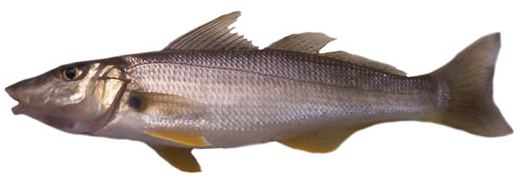Found this great article about sand whiting fishing.
From the website of Jarvis Walker
We thought they were great tips and we wanted to share with you all

HOW TO CATCH SOUTH EAST QUEENSLAND’S SAND WHITING
Sand whiting are the sporty little speedsters of South East Queensland’s shallow surf gutters and beaches. They are great fun to catch on light line and there is no arguing the lovely sweet taste of fresh whiting fillets.
For those real big whiting, or ‘elbow slappers’, you need to turn your attention from the surf back to the estuaries, as this is where most of those big whiting are caught. The slang term ‘elbow slapper’ comes about from when you catch one of these bigger whiting: as you grab the fish around the head to remove the hook, the tail slaps against your elbow. For most of us this span is about 30-35cm, so any whiting around that size and bigger most certainly fits the nickname. Catch a sand whiting around 40cm and you’ve a fish worth boasting about for many years!
There are four reasonably accessible spots in the South East I recommend you try for these fish:on the Sunshine Coast, the Maroochy and Noosa Rivers; and on the Gold Coast, the Nerang and Coomera Rivers.
All four of these rivers have good sandy bottoms throughout most of the lowers reaches, plus deep holes, channels and sand banks. For most of the time they also have clean clear water, particularly on the top half of the tide.
You will also find good whiting in areas such as Curramudi Lakes, Caloundra, Jumpinpin and the Broadwater.
What you need to look for is a good size sand bank next to deeper water that ends up with a good flow of water over it on the top half of the tide. The bank doesn’t need to be exposed at low tide and it is preferable if it has yabby banks and plenty of melon holes or undulations over it from the fast flowing water.This stirs up plenty of food for fish and provides those little holes to sit in. The fish need a reason to come up onto the bank and the main reason is food. That doesn’t mean you won’t catch them in the deeper channels—theywill be there too—but I achieve better catches over the shallows.
These days, all of these waters have a lot of daytime boat traffic—especially during weekends—so low light periods of dawn, dusk and during the night are the best times to fish. Big whiting do not like moving onto the clear shallows if there is a lot of noise and activity.
As the tide makes, whiting move from the deeper water up over the shallows with the tide. On the run out tide, you will still catch them over the bank but the best bite is when they are coming up to feed. Where the sand bank drops off into the deeper water is the place to try as the tide drops further; this is where they wait for food to come to them.
For bait, digging your own live worms is best, whether they be blood worms, rock worms or wrigglers. The effort required reaps rewards and is why some anglers always seem to do well.You can also opt for buying a few, if the idea of time and effort digging isn’t for you.
I prefer worms over baits such as yabbies and soldier crabs because they stay on the hook better and longer.Small bream and whiting are often over the same banks and they can easily have a quick pick at a yabby or soldier crab and the whole bait is gone. The longer your bait lasts, the better the chance of a bigger fish finding it.
Once you’ve found your chosen bank, anchor up on it. You may end up in less a metre of water but that is plenty deep for whiting.If the bank is too shallow or the boat is too big to get up there, anchor in the deeper water where you can at least cast up onto the shallows. It becomes a patience game: the idea being to throw a couple of long whippy rods out and let them sit there, waiting for the fish to come along.
Try one line close to the channel and the other up on the shallows. You will soon work out where the fish are moving and then concentrate your efforts in that area. It is vital you make as little noise as possible, or you risk spooking the fish. And keep an eye on that rod tip!
A soft whippy rod is best, so the whiting can just grab the bait and mouth it before swallowing it. The less resistance the fish feels, the better your chance of hooking it. It’s hard to resist grabbing the rod immediately but hold back and let the rod load up with the weight of the fish before you try and set the hook. Too eager and you will miss a lot of fish—you will see what I mean as we all do it some time.
The big whiting go hard, so let them go on that first run and then expect them to go at it again as you get them close to the boat. You will find the fish come in waves and you’ll catch a couple in a short period of time, then none for a while. This is why it’s always good to have a few rods out.
The bigger fish will be around right through spring, summer and into autumn so you will have plenty of time to practice. Those warm summer nights are certainly a nice time to be sitting quietly out on the water, just waiting for that ‘elbow slapper’ to come along.




